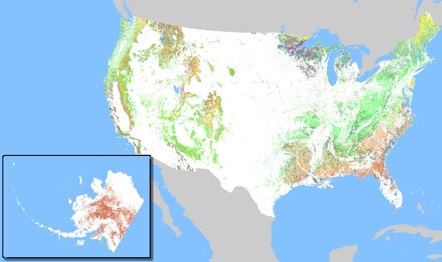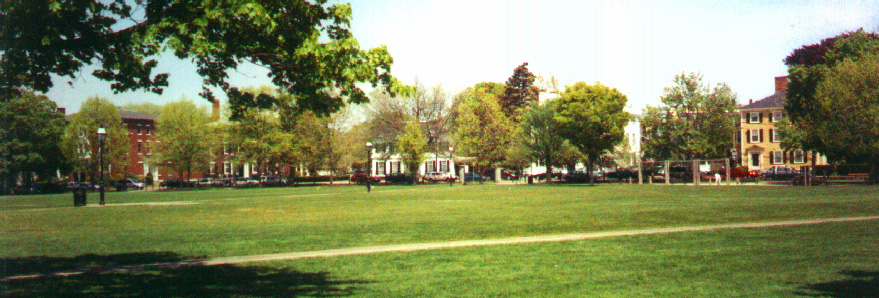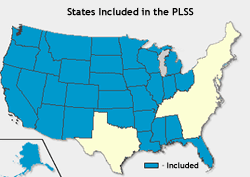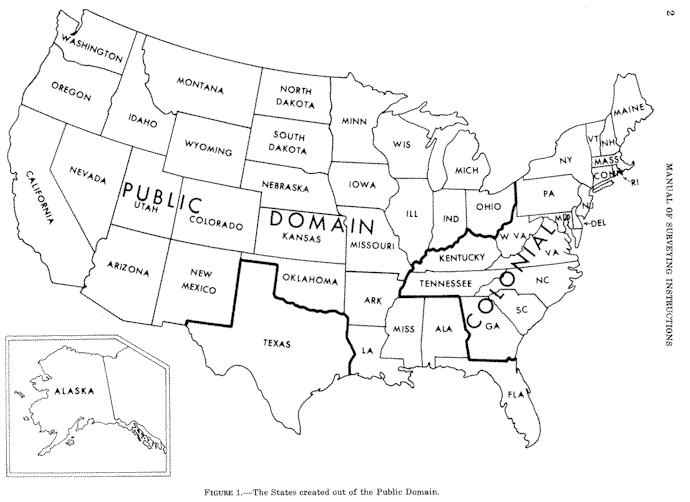 Revolutions
on the land
Revolutions
on the land 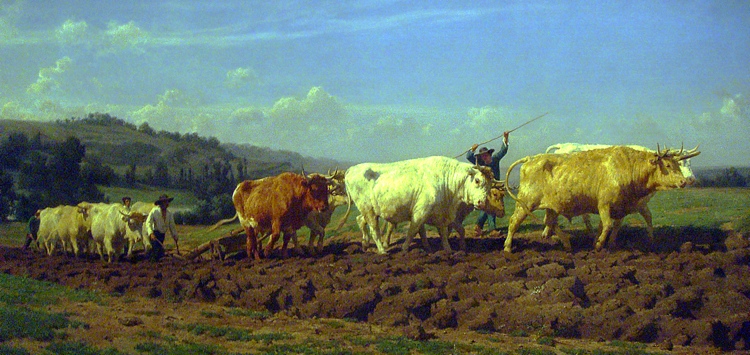
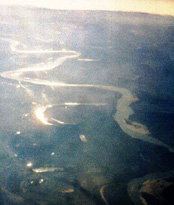
Settlements
Focus point
"The river valleys of the Atlantic shore cut through the coastal plain, creating large numbers of estuaries, many of which are bordered by extensive tidal marshes. These coastal wetlands have been held in public trust since the original colonial grants. Unlike rights in other portions of the public domain, the public rights to fishing, hunting, and navigation on tidal lands could not be extinguished by sale to private concerns."
Marshes of the Ocean Shore, p. 18.
An artist's conception of Jamestown, Virginia on a tributary river in the Chesapeake Bay.
Pueblo revolt led to spread of horses in the West.
1519 Havana, Cuba founded by Spain 1607 Founding of Jamestown, on James River in Virginia
1620 Plymouth Colony in Massachusetts
1626 New Amsterdam (New York City) settled by the Dutch West India Company
1630 Boston founded in September as the Massachusetts Bay Colony capital
1642 The English Civil War begins between King Charles I & rebel Puritans
1676 Pueblo revolt in New Mexico & Amerindian revolt against Virginia colony
1680 Dodo - a flightless bird became extinct
1703 Newton's Optics is published
1763 Britain makes a colonial western boundary along the Appalachian Mountains
1775 Britain's demands lead to rebellion in Massachusetts
1776 The Thirteen colonies declare independence from the United Kingdom
1780 Los Angeles pueblo founded by the Spanish
1785 Land Ordinance & Public Domain declared by the Confederation Congress
1789 The Constitution was ratified and adopted
1803 Jefferson buy's Louisiana from Napoleon of France
1810 New York state surveys begin for the building of the Erie Canal
1848 Mexico cedes the southwest to the United States after a war
1849 Gold in the Sierra Nevada Mountains, San Francisco founded
Visualizing colonial life.
1. The settings
a. John White's drawings
b. European descriptions reveal a tensionFrontier of shifting capacities & contrasting values.
The roles of labor and land
Starting with coastal topographic changes.2. Colonial economy
3. Colonial charters & rights
4. Frontier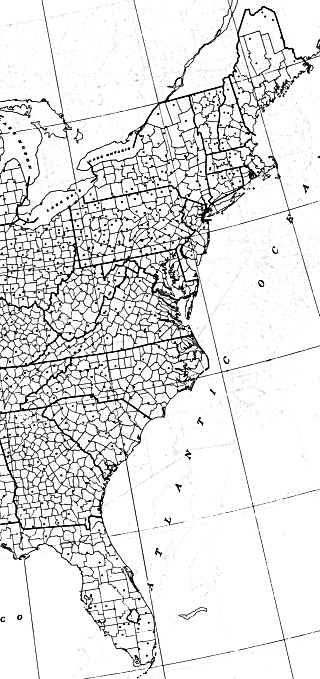
B. Salient views with lasting impacts To make "a whole Continent as fruitful and convenient for the use of man."
Jonathan Winthrop, Governor of Seventeenth Century, New England Protestant minister.
Colonization of the Northeast & Southwest were examples of two related
ecological revolutions.
a. colony defined as a small enclave distant from home who share a similar set of behavior based on customs, rituals, beliefs and purpose
b. settlement patterns-parcels for farming required forests and springs
i. counties in the south (large, sprawling --within a day or two horse ride)
ii. townships in the north (confined to a measured --walkable scale)
iii. commons (pasture, timber marshes) often used a boundaries
- forests were called "coppice" & used for fuel, construction, utensils
- salt licks or mineral deposits (bog iron) used for preserving & tools
c. urban setting dense clusters of people: Boston, New Amsterdam, Newport as earliest port towns
reclamation has two meanings:
- to make dry land from wetlands, marshes, or seas
- to bring fresh water to dry, arid, or desert land
altered landscapes and seascapes
d. commercial
i. trade with the West Indies and Europe
ii. African Slave TradeReasons for actions that altered the seaboard states
Religious theory of a person's worth
Rationalism in the theoretical service of democratic norms
maps.
landscapes change | worldviews | ecological core is | land as wealth | ecosystems are? | terms | dates | outline
Salem common is the oldest public land in the United States, its eight acres were set aside in 1630.
Despite the age of the Salem Common, Native America and Spanish settlements in the south and west predate the English arrival.
1. Legal types of terrain: public lands versus private "free-hold"
2. This requisite partnership is often denied.
3. But both sustained rapid population growth.
A Country of Illusion: America is more than we can grasp.
Storms in people's minds obscure reality
What is nature; what we know or what we think?
Expeditions and expectations
cities of gold & fountains of youth
savage crueltiesThe expeditions revealed the stark reality of the places described, while the expectations fed by hope prompted a recurrent fostering of illusions that measured success of settlement by how much was altered by human and animal labor.
Geographical determinism versus worldviews that differed
Dates:
1539 Coronado’s expedition to the southwest
1776 Mission San Diego founded in California
1848 Treaty ending the Mexican War
1869 first Powell expedition
1888 Powell’s irrigation survey
1900 Theodore Roosevelt became President
Setting & context
contrast of habitats in North America
arid west & humid east

a. literal meaning– borderlands, between two (or more) groups of sparsely settled regions
b. figurative meaning– the existence of free-land in the West for homesteads
c. counter argument, reclamation and drainage
Spanish & French missionaries & settlers
- Spanish earliest and stayed in West and South, Gulf Coast
- French later and stayed in central: St. Lawrence, Ohio, Mississippi rivers
- Dutch, Swedes, Danes in East and in the West Indies
- English, latest started in Virginia, Massachusetts and Maryland
Children of the real borderlands and homesteaded territories
- Daniel Boone,
- Andrew Jackson,
- Abraham Lincoln,
- Samuel L. Clemens, or Mark Twain,
- John Muir,
- Thorstein Veblen, &
- John Wesley Powell,
A settled landscape or cultural landscape:
Thomas Jefferson’s secular dream (Land Ordinance of 1785)
- rational --
a system of "townships" and surveyed range line = "Township
and Range system"
- agrarian --
farming was given preference in promoting settlement on the frontier
- state equality
-- new states entered on equal status with 13 colonial states.
Among the many great divisions of people in early American history the geographical remoteness and economic use of terrains and watersheds is called sectionalism. Eastern differed form western conditions such that cultures emerged with opposing interests to promote. The glaciated northern soils gave rise to an agricultural association of crops that differed from the laterite soils of the the non-glaciated and sub-tropical southern regions.
Buts it is the slow --almost imperceptible declines in reliable rainfall patterns to sustain agriculture that mark the important distinction between the Mississippi Valley and the Rocky Mountain west. Here the transitions from forested lands to prairies and then to arid plains before reaching high desert provided radical contrasts from the usually well watered and spring fed farms and cities of the Eastern seaboard.
Remoteness and lack of transportation led to a dependence on rivers and streams for conveyance of goods, people, animals, and resources until well after the Civil War (1861-1865) depending on the region. Only the coming of canals, railroads and turnpikes for wagons really altered, but never fully broke the isolation of the coastal and interior settlers alike. Thus communities became centered on key places where one form of transport was shifted to another. Richmond, Pittsburgh, Buffalo, Cincinnati, Nashville, Minneapolis, New Orleans, Santa Fe, or St. Louis all became the regional focal points in the early Republic of commerce, trade, manufacture and wealth from the countryside or frontier.
Besides agricultural grains, livestock and orchard crops, the frontier provided hides and furs, tallow, timber or finished lumber, coal, iron, and salt were all significant commodities until the 1920s. Some of these commodities remain so today.
The
Colorado River and the desert southwest
• agrarian Indians, settled in pueblos on Mesas (to catch water)
• clues to subsistence -- corn, beans and squash in river bottoms,
dry farming.
Country
of the far west's geography: “great American Desert" but it was called "A Garden in the Grasslands” by promoters of settlement.
- Railroad promoters
- “rain follows
the plow”
- 183 million
acres acquired from Mexico and passed into Department of Interior authority
(1849)
- Powell’s comprehensive land use plan for the west (1878)
The west has become today the catastrophe Powell predicted due to lack of water and expensive irrigation systems that have the tendency to make the soil more alkaline due to the evaporation of water with mineral salt content.
Reisner-chapter 1.
maps.
Los Angeles & San Francisco as rival cities:
"The boom was predictably short lived .... By 1892, the population had dropped by almost one-half, but the bust was followed by an oil boom, and enough fortunes were made to pack the arriving trains again....Only one thing stood in the way of what looked as if it might become the most startling rise to prominence of any city in history--the scarcity of water."
"The aqueduct took six years to build. The Great Wall of China and the Panama Canal were bigger jobs, and New York's Catskill aqueduct, which was soon to be completed, would carry more water, but no one had ever built anything so large across such merciless terrain and no one had ever done it on such a miniscule budget....It would cover 223 miles, 53 of them in tunnels....The entire concrete making capacity of Los Angeles was not adequate for this one project....and the whole job would have to be done with electricity...."
Reisner, p. 84.
"No one says or remembers much about the Reclamation service's involvement in the Owen's Valley story, which is ironic, because nothing in its history may have affected the interests of the nation-at-large quite as much."
"Small farmers do not matter much in the worldly scheme of things."
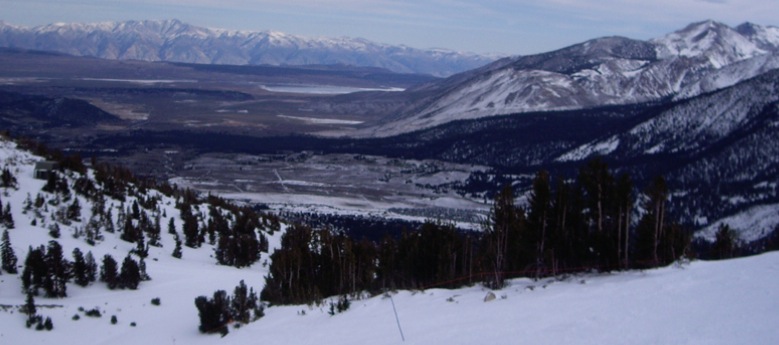
"The Owens River created Los Angeles, letting a great city grow where common sense dictated that one should never be, but one could just as well say that it ruined Los Angeles."
"....much of California is doomed to be insufferable"
Remi Nadeau, see also California Water
Reisner, pp. 102-103.
The New England frontier

Do Reisner, Siry, or Merchant answer how landscape changes occur?
Alfred Crosby and Ecological Imperialism -- an alternative view of world history
- Time, cycles, historic changes
- frontier's landscape heritage, J. V. Siry.
- Early America -- an outline.
- Images of the American landscape
- Thinking Like A Mountain
- Aboriginal America, the role of Amerindians in Environmental History
- Settlements of the Northeast & Southwest were examples of ecological revolutions.
- American revolutionary and early Nationalist attitudes about nature, landscape and settlement.
- Donald Worster, as a model of an environmental historian
- Exam study guide
- "The land was ours, before we were the lands."
- Landscape art and the promise of America.
ecological core is | worldviews | ecosystems are? | landscapes change

